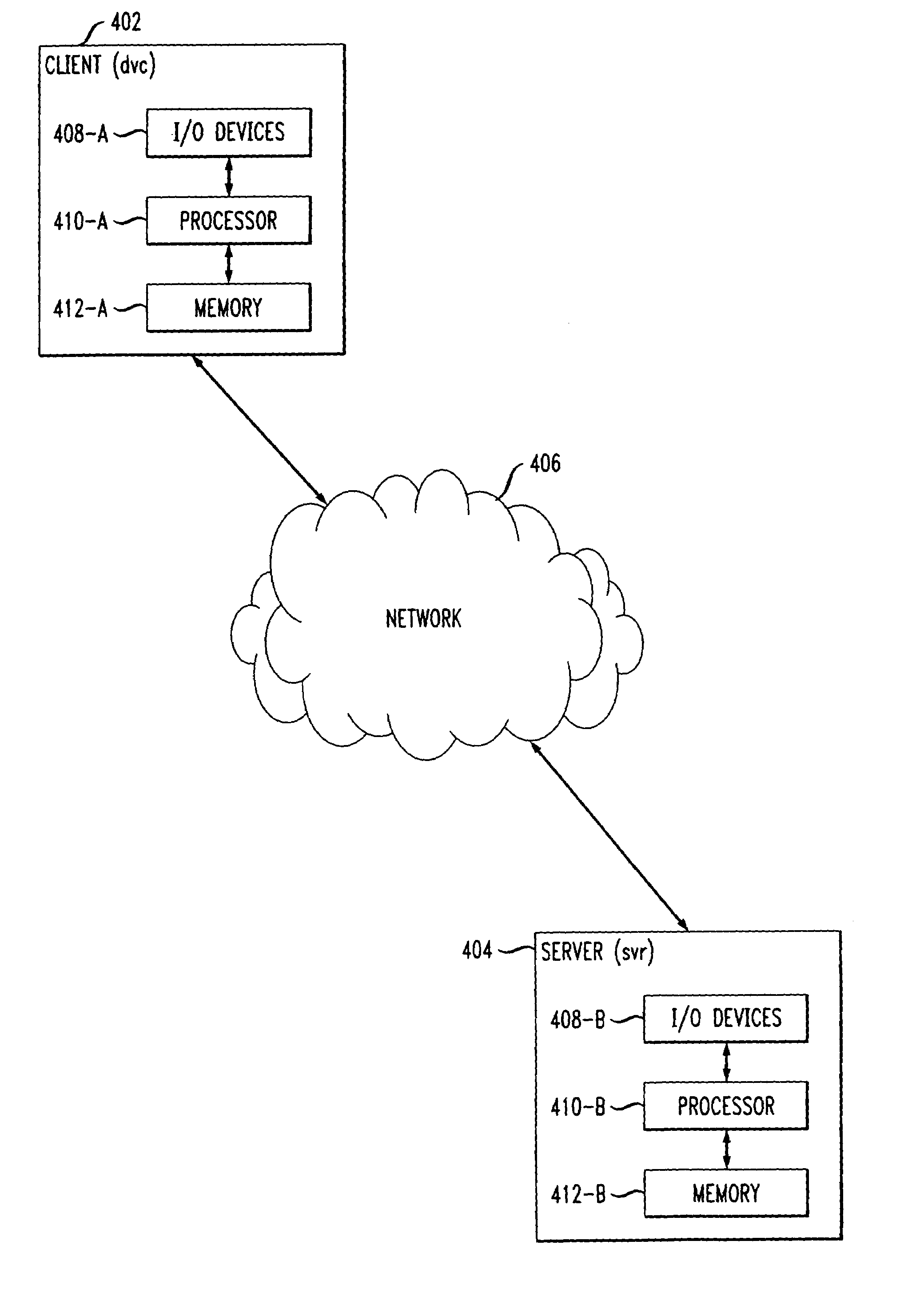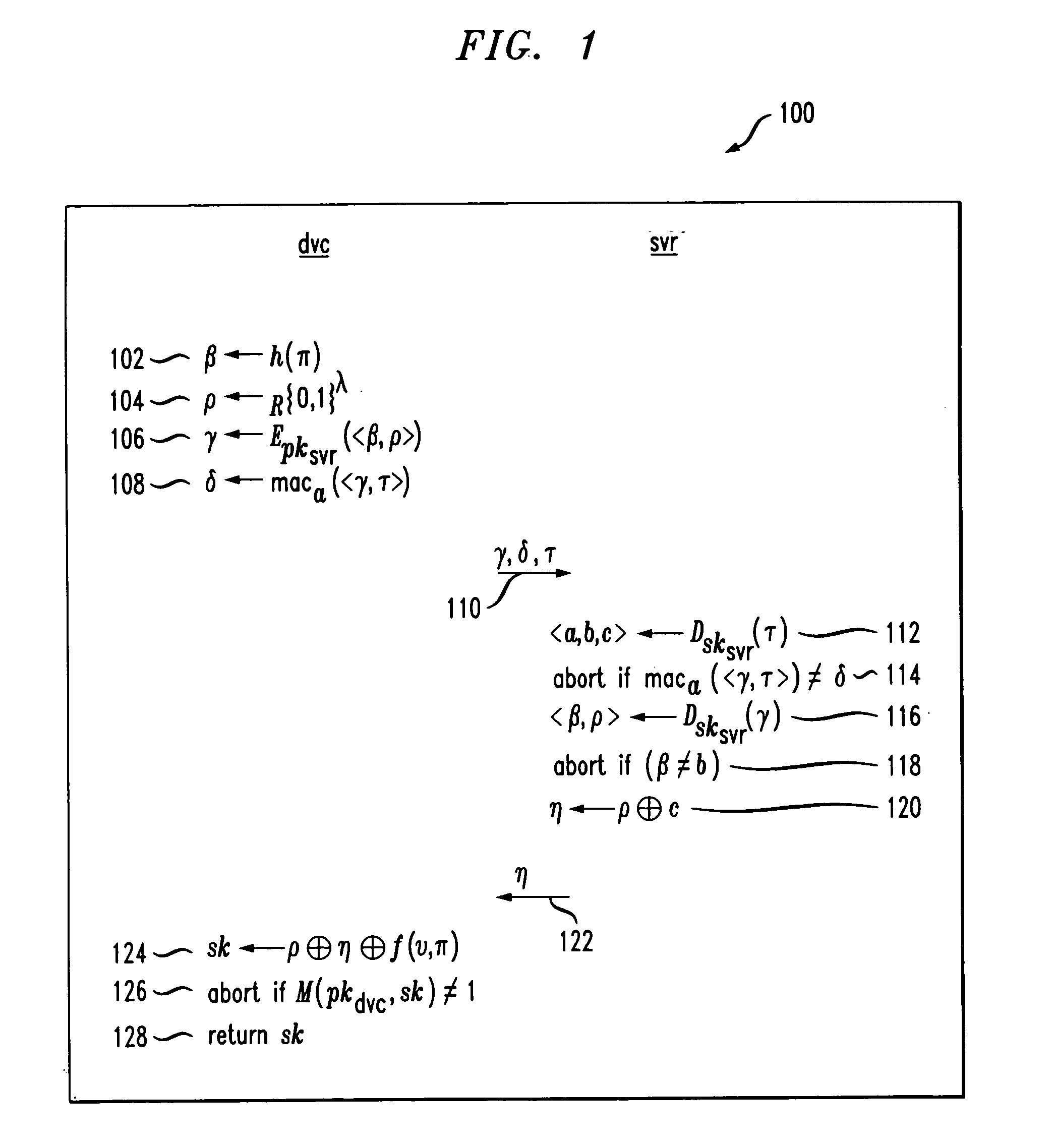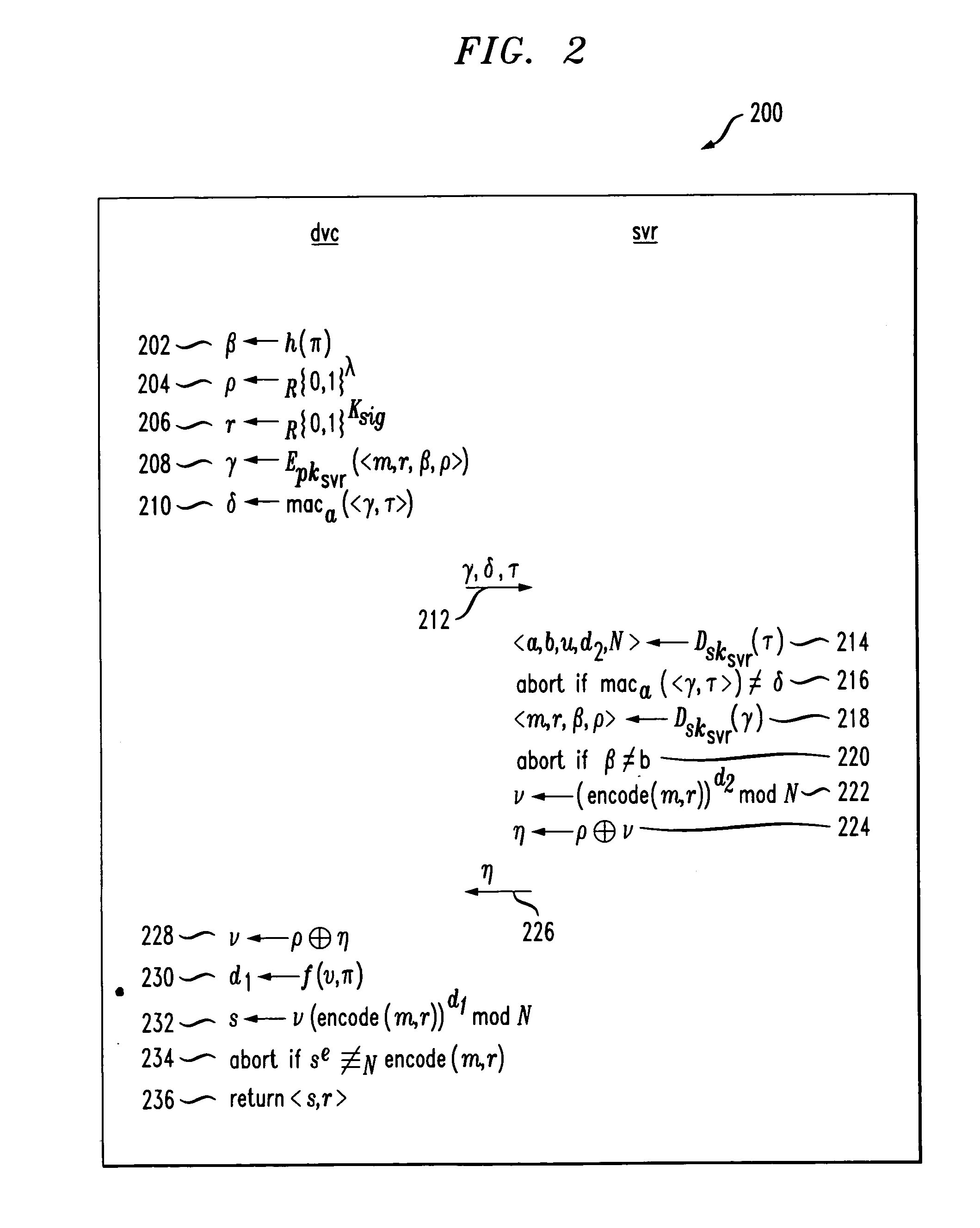Methods and apparatus for providing networked cryptographic devices resilient to capture
a cryptographic device and network technology, applied in the field of cryptography, can solve problems such as untrustworthiness of servers, and achieve the effect of reducing security
- Summary
- Abstract
- Description
- Claims
- Application Information
AI Technical Summary
Benefits of technology
Problems solved by technology
Method used
Image
Examples
first embodiment
[0088]Referring now to FIG. 2, a flow diagram illustrates a protocol 200 with key disabling in accordance with the present invention, i.e., the S-RSA protocol. In step 202, the device computes β, which is a value that proves the device's knowledge of π to the server. The device computes ρ in step 204, which is a one-time pad by which the server encrypts νto return it to the device. The value r is a κsig-bit value used in the ‘encode’ function and is computed in step 206. The value γ is computed in step 208 and represents an encryption of m, r, β and ρ in order to securely transport them to the server.
[0089]In step 210, δ is computed by the device and represents a message authentication code computed using a. This value shows the server that this request originated from the device. As in section 1 above, δ is not necessary to prove security relative to the above-mentioned goals, but nevertheless is important in practice to prevent denial-of-service attacks. It is important that the d...
second embodiment
[0106]Referring now to FIG. 3, a flow diagram illustrates a protocol 300 with key disabling in accordance with the present invention, i.e., the D-ELG protocol. More specifically, FIG. 3 illustrates a protocol by which the device decrypts a ciphertext c generated using the device's public key in an ElGamal-like encryption scheme. The input provided to the device for this protocol is the input password π, the ciphertext c, and all of the values saved on stable storage in the initialization protocol of subsection 2.2.1 above. In this protocol, hzkp is assumed to return an element of Zq.
[0107]In step 302, the well-formedness of the ciphertext c is tested by the device. If the function valid(c) returns a zero, the decryption protocol is aborted. If the function valid(c) returns a one, the decryption protocol continues on to the next steps. As before, the device computes β in step 304, which is a value that proves the device's knowledge of π to the server. The device computes ρ in step 30...
PUM
 Login to View More
Login to View More Abstract
Description
Claims
Application Information
 Login to View More
Login to View More - R&D
- Intellectual Property
- Life Sciences
- Materials
- Tech Scout
- Unparalleled Data Quality
- Higher Quality Content
- 60% Fewer Hallucinations
Browse by: Latest US Patents, China's latest patents, Technical Efficacy Thesaurus, Application Domain, Technology Topic, Popular Technical Reports.
© 2025 PatSnap. All rights reserved.Legal|Privacy policy|Modern Slavery Act Transparency Statement|Sitemap|About US| Contact US: help@patsnap.com



